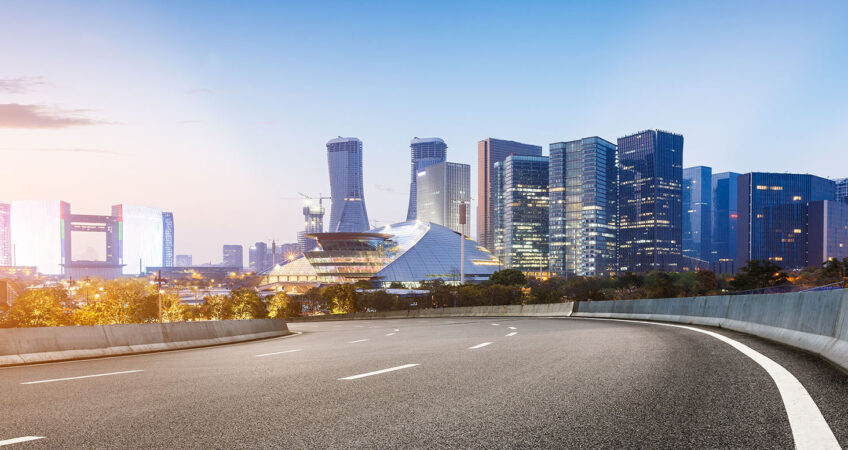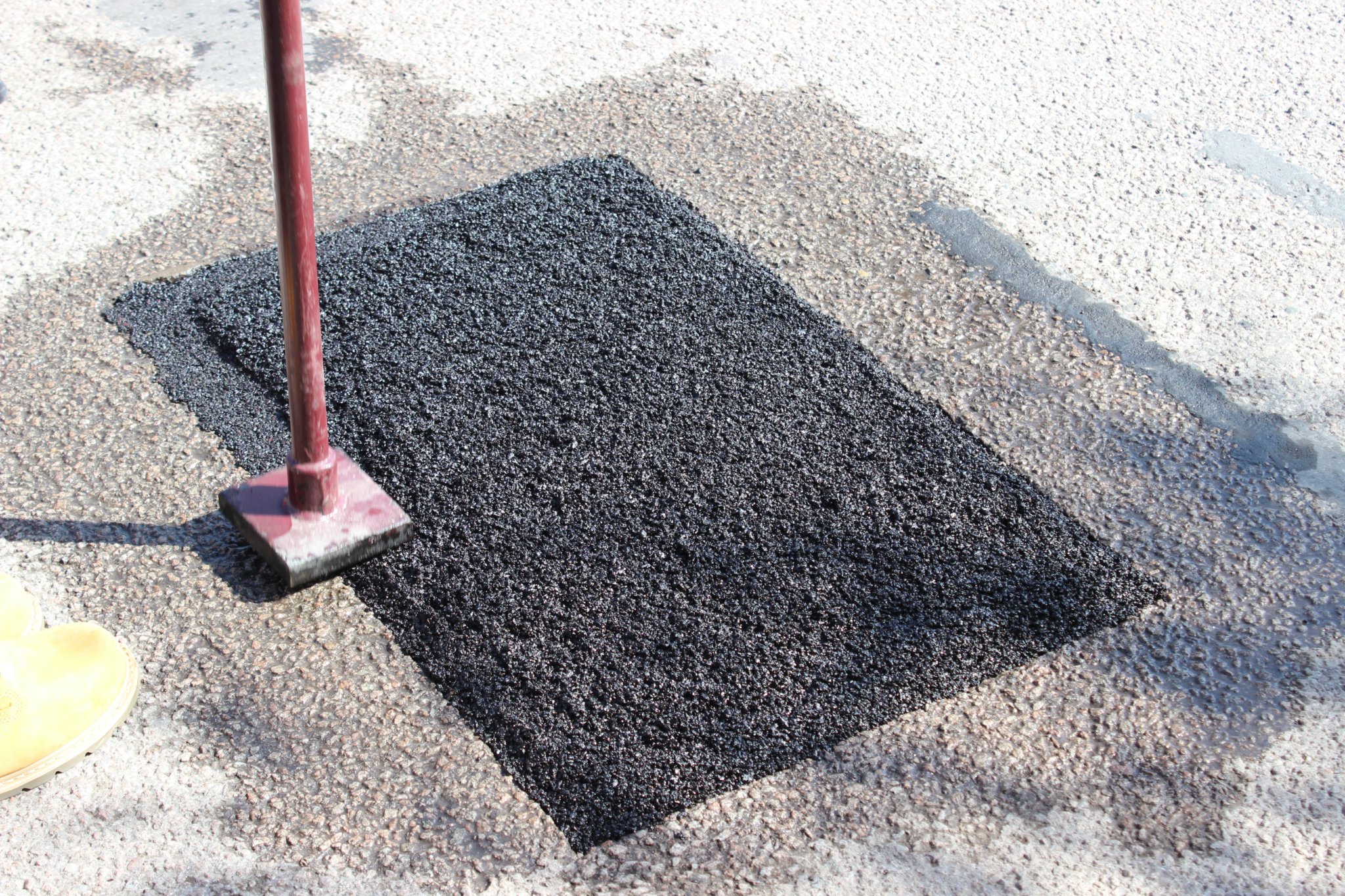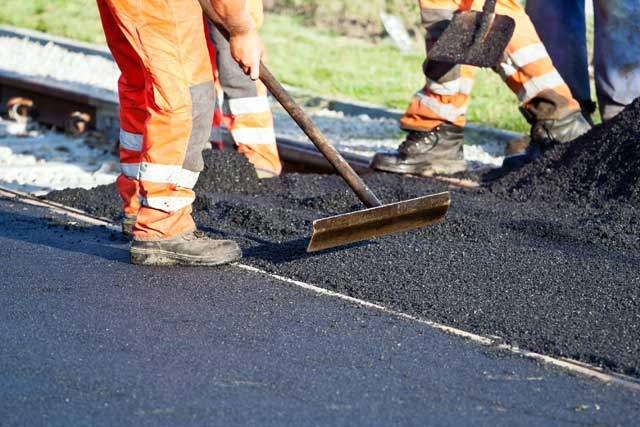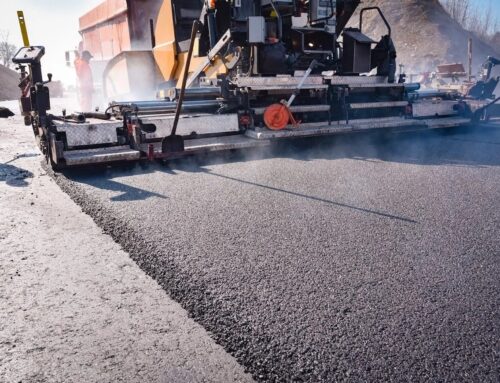Regarding urban development and infrastructure, the materials we choose for our roads and pavements play a crucial role. The debate between using asphalt and concrete is particularly relevant in Melbourne, a city known for its dynamic weather and diverse urban landscape. This blog seeks to explore the subtleties of this discussion, providing an insight that is specific to Melbourne on the comparative aspects of these two well-liked materials. We’ll explore their composition, properties, cost-effectiveness, environmental impact, and performance under Melbourne’s unique climatic conditions. By examining local case studies and gathering insights from industry experts, this discussion aims to provide valuable information for urban planners, engineers, contractors, and residents interested in the development of Melbourne’s infrastructure. Join us as we navigate the streets of Melbourne, uncovering the strengths and limitations of asphalt and concrete in shaping the city’s roads and walkways.
Importance of Road Materials in Urban Planning and Infrastructure
Road materials are vital in urban planning and infrastructure, serving as the foundation for safe, durable, and efficient transportation networks.
- Durability and Longevity: The choice of road material directly affects the longevity and maintenance requirements of roads and pavements. Durable materials like concrete and asphalt reduce the need for frequent repairs, ensuring long-lasting infrastructure.
- Safety: Road materials impact the safety of road users. Characteristics such as resistance to skidding, surface smoothness, and the capacity to withstand traffic burdens and various weather conditions play a vital role in averting accidents and safeguarding the well-being of both drivers and pedestrians.
- Cost-Effectiveness: The initial cost of laying roads and ongoing maintenance expenses are significant considerations in urban planning. Choosing the right material can lead to cost savings over time and efficient use of public funds.
- Environmental Impact: Sustainable urban planning requires consideration of the environmental impact of road materials. This includes their production’s carbon footprint, recyclability, and effect on urban heat islands and water runoff.
- Aesthetic and Functional Aspects: Road materials contribute to the aesthetic appeal of urban areas and can be used to complement urban design. They also play a role in noise reduction, drainage, and the overall functionality of transportation networks.
- Adaptability to Local Conditions: The effectiveness of road materials can vary based on local conditions such as climate, soil type, and traffic patterns. In Melbourne, for instance, the material needs to be resilient enough to endure diverse weather patterns, which include scorching summers and rainy winters.
- Economic Development: Good road infrastructure is essential for economic development. It improves accessibility, reduces transportation costs, and stimulates growth by connecting different areas of the city efficiently.
- Urban Heat Island Effect: Different road materials have varying levels of heat absorption and radiation. This is especially important in urban areas, where the heat island effect can increase temperatures, impacting local climates.
- Water Management: Some road materials offer better permeability than others, influencing how urban areas handle rainwater and reduce flooding risks.
- Innovation and Future Trends: The evolution of road materials, including the development of more sustainable or technologically advanced options, is integral to future-proofing urban infrastructure.
The selection of road materials is a critical component of urban planning, influencing the safety, sustainability, and efficiency of transportation infrastructure, as well as the overall quality of life in urban environments like Melbourne.
Comparison Chart of Asphalt and Concrete
This detailed comparison underscores the distinct characteristics, uses, and considerations for Asphalt and Concrete, particularly in the context of construction and infrastructure development.
| Asphalt | Concrete | |
| Composition | Composed of aggregates like gravel and sand, combined with a bitumen binder. Bitumen, derived from petroleum, is what gives asphalt its flexible and waterproof qualities. | Made up of cement (usually Portland cement), water, and aggregates. When water is added to cement, it reacts and hardens, binding the aggregates into a solid mass. |
| Strength | Exhibits moderate strength with a key feature being its flexibility. This flexibility allows asphalt to adapt to underlying surfaces and withstand minor movements without cracking. | Known for its high compressive strength, making it ideal for structures that must withstand heavy loads. However, it has less tensile strength and often requires reinforcement with materials like steel. |
| Durability | Offers good durability, especially with proper maintenance. It can last for decades, although the surface may require periodic resurfacing and patching. | Generally more durable and long-lasting than asphalt. It can withstand wear and tear over many years with minimal maintenance, but is prone to cracking. |
| Installation Time | Relatively quick to install and cure. Roads and pavements made of asphalt can be opened for use shortly after laying. | Requires a longer curing time. The curing process is crucial for concrete to achieve its full strength, which can take several weeks. |
| Maintenance | Requires regular upkeep, such as resurfacing and patching, particularly in regions experiencing high traffic or severe weather conditions. | Generally requires less maintenance than asphalt. However, if cracks or damage occur, repairs can be more complex and costly. |
| Environmental Impact | Although recyclable, the production of asphalt is energy-intensive and contributes to greenhouse gas emissions. However, advancements in warm-mix asphalt technologies are reducing its environmental impact. | The manufacture of cement, an essential ingredient in concrete, demands a lot of energy and is a major contributor to CO2 emissions. 0Nonetheless, the long lifespan of concrete can offset some environmental impacts over time. |
| Cost | Generally less expensive than concrete, both in terms of initial installation and maintenance costs. The cost-effectiveness of asphalt makes it a popular choice for large areas like roads and parking lots. | Typically more expensive than asphalt due to its longer lifespan and the higher costs associated with its materials and installation. |
| Main Applications | Primarily used for road construction, driveways, and parking lots due to its smooth finish, noise reduction properties, and ability to be quickly laid and used. | Used in a wide range of construction projects, including buildings, bridges, and large infrastructure projects, due to its strength and durability. |
Analysing Melbourne’s Climate and Its Implications
Analysing the climate of Melbourne and its implications on construction materials, particularly asphalt and concrete, requires a detailed understanding of local weather conditions and how these materials interact with them. Here’s a more detailed analysis:

Melbourne’s Climate Overview
- Temperature Variations:
- Melbourne is characterised by a temperate oceanic climate, exhibiting clear seasonal changes that span from warm to hot summers and transition to cool to cold winters.
- Summer temperatures often reach above 30°C, with occasional spikes above 40°C. In contrast, winter temperatures can drop below 10°C, occasionally nearing freezing point.
- Precipitation and Humidity:
- The city experiences variable rainfall, with late autumn and winter being the wettest periods.
- Humidity levels can fluctuate, which can affect the curing and setting of road materials.
- Extreme Weather Events:
- Melbourne is also subject to occasional extreme weather events, such as storms and heatwaves, which can put additional stress on road surfaces.
Implications for Asphalt
- Temperature Response:
- High summer temperatures can make asphalt more malleable, potentially leading to surface deformation under heavy traffic.
- In winter, asphalt’s flexibility allows it to contract and expand without cracking, a significant advantage in cooler temperatures.
- Water Management:
- Asphalt’s impermeable nature efficiently prevents water penetration, reducing the risk of damage from Melbourne’s rainfall.
- However, proper drainage is crucial to avoid water pooling on the surface, which can degrade the asphalt over time.
- Maintenance Requirements:
- Regular maintenance, including sealing cracks and resurfacing, is more critical in fluctuating climates like Melbourne’s to prolong the lifespan of asphalt surfaces.
Implications for Concrete
- Durability Against Temperature:
- Concrete is less affected by high temperatures, maintaining its structural integrity better than asphalt during heatwaves.
- However, sudden temperature changes can cause concrete to expand and contract, potentially leading to cracks if not properly reinforced.
- Rainfall and Moisture Effects:
- Concrete handles moisture well, with a lower risk of erosion or water damage.
- The design of concrete surfaces often includes adequate drainage to manage Melbourne’s rainfall.
- Longevity and Upkeep:
- Concrete typically requires less frequent maintenance than asphalt. However, any damage, like cracking, can be more challenging and expensive to repair.
Construction Considerations in Melbourne
- Site-Specific Material Selection:
- The choice between asphalt and concrete should consider the specific application, traffic load, and exposure to elements.
- For instance, concrete might be more suitable for heavy-load areas and major thoroughfares, while asphalt could be preferable for residential streets and areas requiring more frequent maintenance.
- Sustainability and Environmental Impact:
- Both materials have environmental impacts that need consideration. Innovations like recycled asphalt and low-carbon concrete are becoming more popular in sustainable construction practices.
- Adaptation to Climate Change:
- With potential changes in Melbourne’s climate, future-proofing infrastructure is crucial. This includes choosing materials that can withstand extreme weather conditions and longer-term climatic shifts.
Melbourne’s climate presents unique challenges for road construction materials. Both asphalt and concrete have their strengths and weaknesses in this environment, and the choice between them should be made based on a comprehensive understanding of these factors, alongside considerations of sustainability and future climate resilience.
Application in Melbourne’s Urban Development
In the context of Melbourne’s urban development, the application of asphalt and concrete plays a pivotal role in shaping the city’s infrastructure. Here’s how these materials are utilised in various aspects of Melbourne’s urban landscape:
- Residential Areas: In residential zones, the choice between asphalt and concrete is often based on factors like aesthetic appeal, cost, and maintenance requirements. Asphalt is commonly used for driveways and local roads due to its lower initial cost and quicker installation time. Concrete, with its longer lifespan and variety of finishes, is preferred for sidewalks, patios, and decorative elements.
- Commercial and Industrial Areas: For commercial and industrial settings, durability and load-bearing capacity are crucial. Asphalt is often selected for large parking lots and access roads due to its flexibility and ability to withstand heavy traffic. Concrete, known for its strength and resilience, is favoured for high-traffic areas like bus lanes, intersections, and loading docks.
- Government and Public Sector Projects: Within public infrastructure developments like highways, bridges, and public transit systems, asphalt and concrete each play unique and specific roles. Asphalt is widely used for road surfacing due to its noise-reducing qualities and smoother ride. Concrete, on the other hand, is often chosen for major highways, overpasses, and bridges because of its durability and minimal need for maintenance.
- Pavements and Walkways: In Melbourne, the choice between asphalt and concrete for pavements and walkways often depends on urban design considerations and pedestrian traffic. Concrete is commonly used for sidewalks in high-foot-traffic areas due to its longevity and resistance to wear and tear.
- Recreational Facilities: For recreational areas like parks, playgrounds, and bike paths, the choice depends on aesthetic preferences, safety, and environmental considerations. Concrete’s versatility in terms of finish and colour makes it a popular choice for areas requiring aesthetic appeal, while asphalt is chosen for its flexibility and softer impact in play areas and bike paths.
- Adaptation to Climate Change: Considering Melbourne’s changing climate, the selection of road materials is increasingly focusing on sustainability and adaptability. New developments in both asphalt and concrete, like the creation of porous pavements and surfaces that repel heat, are being examined as ways to counteract urban heat islands and better manage stormwater.
- Future Trends and Innovations: Melbourne is also witnessing a trend towards more sustainable and technologically advanced road materials. This includes recycled asphalt and concrete, as well as new compositions designed to reduce greenhouse gas emissions and improve the environmental footprint of urban infrastructure.
Durability and Maintenance Guidelines
Understanding the durability and maintenance requirements of asphalt and concrete, especially in a city with a climate like Melbourne’s, involves a detailed consideration of each material’s characteristics and how they interact with environmental factors. Here’s a comprehensive breakdown:

Asphalt Durability and Maintenance
Durability Factors:
- Flexibility: Asphalt’s flexibility makes it less prone to cracking under temperature variations, which is beneficial in Melbourne’s fluctuating climate.
- Heat Sensitivity: In high temperatures, asphalt can become soft and pliable, leading to deformation under heavy traffic.
- Load Bearing: While asphalt can withstand heavy loads, prolonged pressure, especially in heat, can cause rutting.
Maintenance Guidelines:
- Resurfacing: Every 10-20 years, depending on wear and tear. Essential for repairing surface damage and restoring smoothness.
- Crack Sealing: Make sure to inspect annually and immediately seal any cracks to avert water penetration, which can escalate into more serious problems, such as potholes.
- Pothole Repairs: Immediate repair is crucial for safety and pavement integrity. Regular monitoring helps in early detection and repair.
- Sealcoating: Applying a sealcoat every 2-5 years can protect against weathering and oxidation, extending the pavement’s lifespan.
- Drainage Maintenance: Ensuring proper drainage prevents water accumulation, reducing damage risks.
Concrete Durability and Maintenance
Durability Factors:
- Weather Resistance: Highly resistant to weathering, concrete is suitable for Melbourne’s varied climate, with minimal deterioration.
- Load Bearing: Concrete’s compressive strength makes it ideal for high-traffic and heavy-load areas, maintaining structural integrity over time.
- Cracking Potential: Concrete is prone to cracking due to its rigidity, particularly with temperature changes and physical stress.
Maintenance Guidelines:
- Crack Management: Regularly check for and repair cracks to prevent water damage and structural issues.
- Joint Sealing: Proper sealing of expansion joints is essential to accommodate temperature-induced expansion and contraction.
- Surface Treatments: Applying sealants can protect against moisture, stains, and abrasion.
- Reinforcement: In areas of heavy use, consider reinforced concrete for added durability.
- Regular Cleaning: Routine cleaning prevents buildup of materials that could cause surface deterioration.
General Considerations for Both Materials
- Climate Consideration: Choose and maintain materials with Melbourne’s specific weather patterns in mind, including temperature extremes and rainfall.
- Sustainability: Opt for environmentally friendly maintenance practices, such as using recycled materials for asphalt repairs.
- Cost-Efficiency:
- Asphalt generally offers a lower initial cost but may require more frequent maintenance.
- Concrete, while more costly upfront, tends to have lower long-term maintenance requirements.
- Safety and Compliance:
- Regular maintenance ensures road safety, adherence to standards, and minimises the risk of accidents.
- Make sure to inspect annually and immediately seal any cracks to avert water penetration, which can escalate into more serious problems, such as potholes.
Both asphalt and concrete have distinct durability traits and maintenance needs that must be carefully managed, particularly in a city like Melbourne. Proper and timely maintenance is key to extending the life of these materials, ensuring road safety, and optimising investment in infrastructure.
Environmental Considerations for Melbourne
Environmental considerations are crucial when discussing construction materials like asphalt and concrete, especially in a city like Melbourne that experiences a diverse range of weather conditions. Understanding the environmental impact of these materials helps in making informed, sustainable choices for urban development. Here’s an analysis focused on Melbourne:
Asphalt Environmental Considerations
Production Impact:
- Energy Consumption: The production of asphalt is energy-intensive, primarily due to the high temperatures required to mix the bitumen and aggregates.
- Greenhouse Gas Emissions: This process also results in the emission of greenhouse gases.
Recycling and Reuse:
- Recyclability: Asphalt is highly recyclable, and the use of Recycled Asphalt Pavement (RAP) is increasingly common, reducing the need for new raw materials.
- Reduction in Landfill: By recycling old asphalt, the amount of construction waste sent to landfills is significantly reduced.
Innovative Environmental Solutions:
- Warm-Mix Asphalt: This newer technology requires lower temperatures for production, reducing energy consumption and emissions.
- Permeable Asphalt: This type of asphalt allows water to pass through, reducing runoff and aiding in groundwater recharge.
Concrete Environmental Considerations
Cement Production Impact:
- Energy and Resources: The manufacturing of cement, a crucial component in concrete, ranks as one of the major global sources of carbon dioxide emissions and requires considerable energy consumption.
- Resource Extraction: Mining the raw materials for cement and concrete can lead to land degradation.
Longevity and Sustainability:
- Durability: Concrete’s long lifespan means structures need not be replaced as frequently, which can be seen as a form of environmental efficiency.
- Potential for Recycling: Concrete can be recycled and used as aggregate for new concrete or other construction applications.
Green Concrete Initiatives:
- Low-Carbon Cement: Research and development are focused on creating types of cement that emit less carbon dioxide.
- Use of Supplementary Materials: Incorporating industrial byproducts like fly ash or slag can reduce the amount of cement needed, thus lowering the environmental footprint.
General Environmental Strategies for Melbourne
Sustainable Urban Planning:
- Careful material selection considering the overall environmental impact over the lifespan of the infrastructure.
- Incorporation of green spaces and sustainable drainage systems in urban design.
Climate Change Adaptation:
- Building infrastructure that is resilient to the changing climate and extreme weather conditions expected in Melbourne.
- Considering the carbon footprint of construction activities in the context of Melbourne’s overall environmental goals.
Regulatory Compliance and Best Practices:
- Adhering to environmental regulations and standards.
- Encouraging the use of best practices in construction to minimise environmental impact.
When considering the use of asphalt and concrete in Melbourne, it is essential to balance their functional and economic benefits with environmental implications. Each material has its distinct advantages and challenges, shaped by Melbourne’s unique climate and urban needs. Asphalt offers flexibility and cost-effectiveness but comes with higher maintenance needs and environmental concerns due to its production process. Concrete, known for its durability and low maintenance, also poses significant environmental impacts, particularly in cement production. Innovations in both materials, like warm-mix asphalt and low-carbon concrete, are promising steps towards more sustainable urban development. Ultimately, the choice between asphalt and concrete in Melbourne should be guided by a holistic approach, considering long-term durability, maintenance requirements, and environmental sustainability, aligning with Melbourne’s commitment to building resilient and eco-friendly urban spaces.



